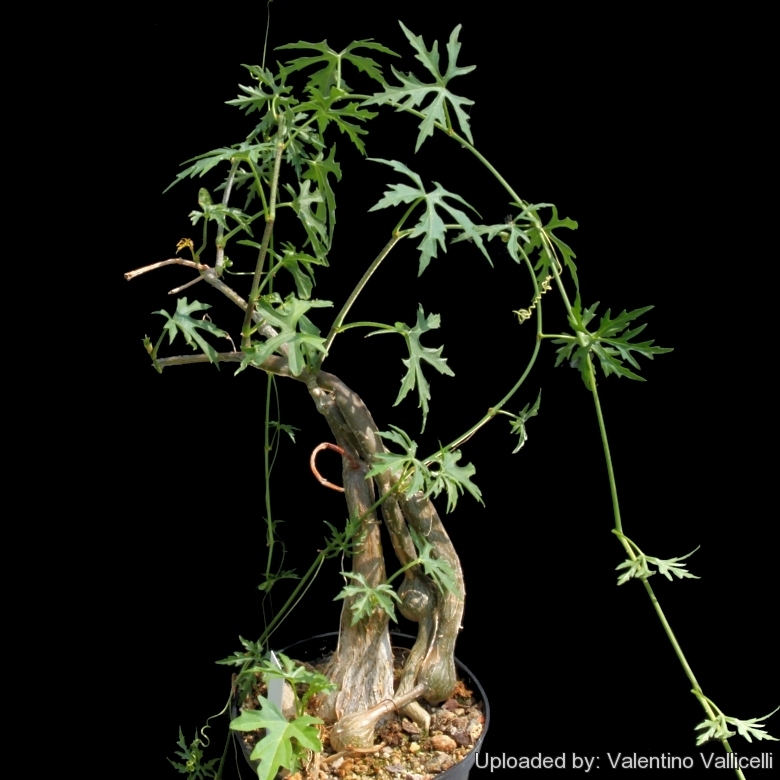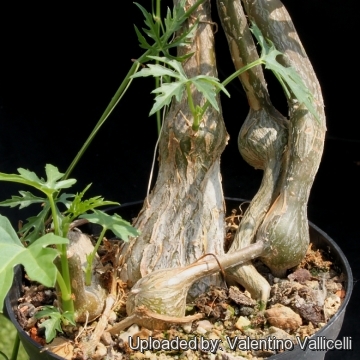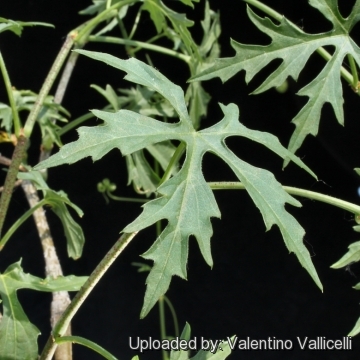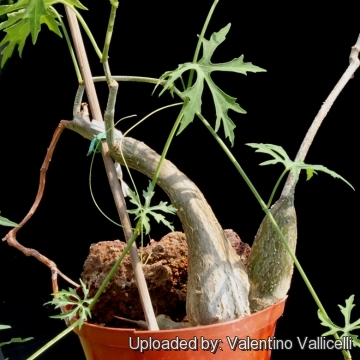Accepted Scientific Name: Cissus tiliacea Kunth
Nov. Gen. Sp. [H.B.K.] 5: 222 1822. Humb., Bonpl. & Kunth

Cissus tuberosa Photo by: Valentino Vallicelli
Origin and Habitat: Puebla, Mexico,at an altitude of about 1500m.
Habitat:
It usually grows on rocky outcrops where its heavily branched scrambling vines may cover rocks and nearby vegetation. During periods of drought, the annual vines die back, leaving only the massive caudex.
Synonyms:
See all synonyms of Cissus tiliacea
back
Accepted name in llifle Database:Cissus tiliacea KunthNov. Gen. Sp. [H.B.K.] 5: 222 1822.Synonymy: 10
back
Description: It is is a peculiar caudiciform with with round, succulent caudexes and with long, fast growing vine-like stems. It is fast growing and quite invasive.
Stem: It has wollen, fleshy greyish-green joints (stem tubers or caudex-like stems) which can eventually grow to 25 cm in diameter with additional deciduous long, fast growing vine-like stems that produces easily aerial roots and spread for one to several meters over and around pots. The cudexes are quite irregular twisted, rather gnarled looking, with usually a few irregular succulent branches with curious swellings at the nodes. At the end of the growing season (Autumn) most of the vines dries up, but any swollen nodes which are in or near the soil (within about 50 cm) will root and form a a new plant. The vines also produce typical tendrils which enable this plant to attach to other vegetation as it grows.
Leaves: Green deeply cut palmate at the nodes of the annual vines.
Flowers: Small greenish which may be followed by small clusters of fruits.
Remarks:While plants in habitat typically produce a horizontal caudex, plants in cultivation can be trained to grow upwards on a trellis or similar support, and should eventually produce a more upright caudex.
 Cissus tuberosa Photo by: Valentino Vallicelli
Cissus tuberosa Photo by: Valentino Vallicelli Cissus tuberosa Photo by: Valentino Vallicelli
Cissus tuberosa Photo by: Valentino Vallicelli Cissus tuberosa Photo by: Valentino Vallicelli
Cissus tuberosa Photo by: Valentino Vallicelli Cissus tuberosa Photo by: Valentino Vallicelli
Cissus tuberosa Photo by: Valentino VallicelliCultivation and Propagation: It do not need to be propagated from seed as it make easily roots at the contact to the soil. Most plants in cultivation have been propagated by this means alone. It will grow best when provided with warmer temperatures, long daylight hours, adequate moisture and a rich soil. Given these conditions, this species will grow rapidly, with the annual vines growing to 150 cm and possibly to as much as 5 m, and its caudex increasing significantly in length and width. In cultivation, these vines can be clipped to much shorter lengths to control rampant growth, but this will also slow the development of the caudex. Keep the drier and cooler in winter, to induce dormancy.














